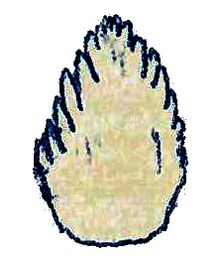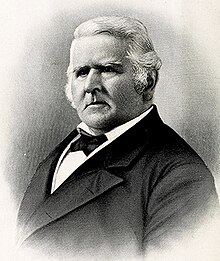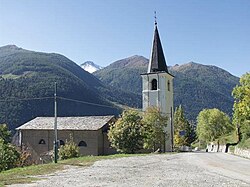필로돈
Phyllodon| 필로돈 시간 범위:, 155마 PreꞒ Ꞓ OSDCPTJKPg N↓ 후기 쥐라기Kimmeridgian. | |
|---|---|
 | |
| Holotype 치아 | |
| 과학적 분류 | |
| 왕국: | 동물계 |
| Phylum: | 척색 동물문. |
| 계통 군: | 소공니아 |
| 주문: | †오르니티스치아 |
| 계통 군: | †네오르니티스키아 |
| 지누스: | †필로돈 Thulborn, 1973 |
| 종: | †P. henkeli |
| 이항 이름 | |
| †Phyllodon henkeli Thulborn, 1973 | |
작은 조반류의 공룡의 Kimmeridgian-aged 어퍼 쥬라기 Camadas 드 Guimarota 형성 레이리아, 포르투갈과 그 Bathonian-aged 치핑 노턴 석회암의 영국에서 Phyllodon(의미"잎 이빨")는 유인원 속이다.[1]그것은 가깝게 북 아메리카에서 동 시대 공룡 관련 수 있다.
이 속 이빨과 아마도 부분 아래 턱에서 알려져 있다.그 이름은 현대의 이끼의 일종.에 사용 중지만 여기에 문제가 되기 때문에 두가지 유기체 두개의 다른 왕국에 있지 않다는 것이다.
역사
Phyllodon MGSP G5의 일부를 아래 턱 이빨 아탄 이회토에서 레이리아의 도시 근처 광산에서 회복에 근거한다.리처드 Thulborn, 이 속 묘사된의 윗 부리로 치아(MGSP G2) 덧붙였다.그는 hypsilophodontid하는 등 치아 배열의 확정적이지 않은 회복 보여 주는 새로운 '속' 여겼다.[2]피터 골턴, 늦은 쥬라기 북미를 검토하기 몇년 뒤, 그 Phyllodon teeth 최고고, 아래 턱 치아 앞 뒤 측면에서 비대칭은hypsilophodontid 정체성에 동의했다 그 Nanosaurus으로 신원을 발견했다 hypsilophodontids.[3]
얼마 전에 2004년, 가능한 Phyllodon 유골은 치핑 노턴 석회암 영국에서 발견되었다.[1]이것들은 실제로 부정 Phyllodon에서 별도의 조반류 동물에 속해 있었다 여전히 가능성이 있다.[4]
그 보다 물질 때문에, Phyllodon은 불확실한 유사성의 모호한 기저 조각류의 공룡으로 버려지고 있다.[5][6]그러나 그것은 이 종에 속하여더 많은 재료는 원래 지방에서 묘사했다 회복되었다.이 물질의 턱의 모든 부분에서 120개가 넘는 치아를 더 하고 이빨은 빠져 4부분 아래 턱 포함되어 있다.올리버 Rauhut, 새로운 재료라고 묘사했습니다, 잠정 Phyllodon이 기인한 것에 아래 턱을 확인하는 다른 비슷한 공룡이 존재하는 곳에서 발견된다.이빨은 매우 작은(최대 3mm을 가로질러 또는 0.1인치)과 가능한 소년.그는 또한, 그것이 유효한 속 결국는지 여부를 나타내는 값 Phyllodon에 대한 새로운 재료에 아주 큰 윗턱 치아를 포함한, 추가 진단 특성을 발견했다.다른 hypsilophodonts에 비유한 후에 그는 자신, 다양한 세부 사항은 그와 밀접히 관련된 제안은 북미 모리슨 지층의 대략 동 시대 음주가들과 일치를 발견했다.[7]마찬가지로, 골턴은 치아 Drinker과 Nanosaurus의 2006년 검토의 역할과 흡사할 것을 알았다.[8]
고생물학
히필로포돈티드나 다른 기저귀 오르니토포드로서 필로돈은 두발로 된 초식동물이었을 것이다.그것의 크기는 추정되지 않았지만, 대부분의 성체 히필로포돈의 길이가 1-2미터(3.3–6.6피트)였기 때문에,[6] 이 속은 아마도 비슷한 크기였을 것이다.북미 드링커스와 나노사우루스와의 유사성은 후기 쥬라기 포르투갈 공룡 파우나와 동시대 모리슨 포메이션 공룡을 연결시킨 또 다른 증거다.[9]
참조
- ^ a b "cf"로 나열됨.영국 글로스터셔 10.3의 필로돈 sp. 2.치핑 노턴 포메이션" 등. 웨이삼펠의 경우.(2004).538페이지.
- ^ Thulborn, Richard A. (1973). "Teeth of ornithischian dinosaurs from the Upper Jurassic of Portugal, with description of a hypsilophodontid (Phyllodon henkeli gen. et sp. nov.) from the Guimarota lignite". Memória Serivoços Geológicos de Portugal. Nova Série. 22: 89–134.
- ^ Galton, Peter M. (1983). "The cranial anatomy of Dryosaurus, a hypsilophodontid dinosaur from the Upper Jurassic of North America and East Africa, with a review of hypsilophodontids from the Upper Jurassic of North America". Geologica et Palaeontologica. 17: 207–243.
- ^ "10.3 글로스터셔, 영국, 2.치핑 노턴 포메이션" 등. 웨이삼펠의 경우.(2004).538페이지.
- ^ Sues, Hans-Dieter; Norman, David B. (1990). "Hypsilophodontidae, Tenontosaurus, Dryosauridae". In Weishampel, David B.; Dodson, Peter; Osmólska, Halszka (eds.). The Dinosauria (1st ed.). Berkeley: University of California Press. pp. 498–509. ISBN 0-520-06727-4.
- ^ a b Norman, David B.; Sues, Hans-Dieter; Witmer, Larry M.; Coria, Rodolfo A. (2004). "Basal Ornithopoda". In Weishampel, David B.; Dodson, Peter; Osmólska, Halszka (eds.). The Dinosauria (2nd ed.). Berkeley: University of California Press. pp. 393–412. ISBN 0-520-24209-2.
- ^ Rauhut, Oliver W.M. (2001). "Herbivorous dinosaurs from the Late Jurassic (Kimmeridgian) of Guimarota, Portugal". Proceedings of the Geologists' Association. 112 (3): 275–283. doi:10.1016/S0016-7878(01)80007-9.
- ^ Galton, Peter M. (2006). "Teeth of ornithischian dinosaurs (mostly Ornithopoda) from the Morrison Formation (Upper Jurassic) of the western United States". In Carpenter, Kenneth (ed.). Horns and Beaks: Ceratopsian and Ornithopod Dinosaurs. Bloomington and Indianapolis: Indiana University Press. pp. 17–47. ISBN 0-253-34817-X.
- ^ Mateus, Octávio (2006). "Late Jurassic dinosaurs from the Morrison Formation (USA), the Lourinhã and Alcobaça Formations (Portugal), and the Tendaguru Beds (Tanzania): a comparison". In Foster, John R.; Lucas, Spencer G. (eds.). Paleontology and Geology of the Upper Morrison Formation. New Mexico Museum of Natural History and Science Bulletin (36). Albuquerque, New Mexico: New Mexico Museum of Natural History and Science. pp. 223–231.



